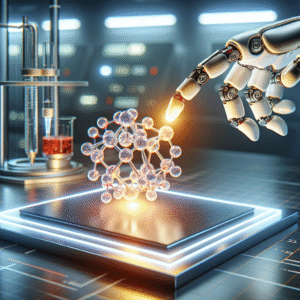‘Tone Deaf’: The Consequences of Job Cuts in Tech
In an era where technology is rapidly evolving, the recent actions of a prominent U.S. tech company have raised eyebrows and sparked outrage across various sectors. Following a catastrophic global IT outage, the company has announced plans to cut jobs and increasingly rely on artificial intelligence (AI) for its operations. This decision has been deemed tone deaf by many critics, who argue that it demonstrates a concerning disregard for the human element in the tech industry.
Understanding the Global IT Outage
Recent events have highlighted the vulnerabilities of our interconnected digital infrastructure. The global IT outage caused significant disruptions, affecting numerous organizations and individuals worldwide. The fallout from this incident has triggered a series of reactions, including the tech company’s response to reassess its workforce and operational strategies.
What Caused the Outage?
The details surrounding the cause of the outage are complex, involving technical glitches, server failures, and perhaps even outdated systems that struggled to handle the immense load placed upon them. The repercussions were felt across various sectors, particularly in industries that heavily rely on technology for daily operations.
The Immediate Aftermath
– Businesses reported lost revenue due to downtime.
– Customers expressed frustration over service interruptions.
– Employees faced uncertainties regarding job security.
The combination of these factors forced the tech company to undertake a critical evaluation of its infrastructure and workforce.
The Decision to Cut Jobs
In a surprising turn of events, the tech company announced a plan to cut jobs as part of its strategy to “streamline operations.” This decision has been met with backlash, as many feel that it overlooks the importance of human resources in maintaining effective operations.
Reasons Behind Job Cuts
Several factors contributed to this decision:
1. Cost Reduction: In an effort to mitigate losses incurred during the outage, the company is looking to cut back on personnel costs.
2. Shift to Automation: The integration of AI into various processes is seen as a way to enhance efficiency, but it raises concerns about job displacement.
3. Focus on Innovation: The company aims to redirect resources towards innovation, often at the expense of existing employees.
While these reasons may seem justified from a corporate perspective, critics argue that they fail to consider the broader implications on the workforce and the communities that rely on these jobs.
The Role of Artificial Intelligence
With the announcement of job cuts, the tech company also indicated a significant move towards using AI to replace certain functions that were previously handled by human employees. While AI can streamline processes and reduce costs, it also presents a host of ethical and practical concerns.
The Potential Benefits of AI
– Increased Efficiency: AI systems can handle repetitive tasks faster than human workers.
– Data Analysis: AI can process vast amounts of data to provide insights that can drive business decisions.
– Cost Savings: Reducing the workforce can lead to significant savings in salaries and benefits.
The Concerns Surrounding AI Implementation
Despite the potential benefits, the shift towards AI has raised several red flags:
1. Job Displacement: Many employees are rightly concerned about losing their jobs to machines.
2. Ethical Issues: The reliance on AI may lead to biased decision-making, as these systems can reflect the biases of their creators.
3. Lack of Human Touch: Many roles in tech require emotional intelligence and human interaction, aspects that AI cannot replicate.
In a world where technology is advancing at an unprecedented pace, it is vital to consider the balance between innovation and the need for human-centric job roles.
Public and Employee Reactions
The company’s decision has not gone unnoticed. Employees, industry experts, and the general public have expressed their outrage and disappointment. Many are calling for a reevaluation of the approach being taken, emphasizing the need for a more humane strategy in the tech industry’s evolution.
Employee Sentiment
– Fear and Uncertainty: Many employees are feeling insecure about their positions and the future of their roles.
– Calls for Transparency: Employees are urging the company to be more transparent about its plans and how these changes will impact them.
– Advocacy for Employee Rights: Activists and labor unions are pushing back against the job cuts, advocating for employee rights and fair treatment.
Public Outcry
Social media has become a platform for many to voice their concerns over the company’s decisions. Critics argue that the move reflects a broader trend in the tech industry where profit margins have taken precedence over the well-being of workers.
The Future of Work in Tech
As we look to the future, it is essential to understand the implications of these changes in the tech industry. The shift towards automation and AI is likely to continue, but it must be approached thoughtfully.
Rethinking Workforce Strategies
The tech company has an opportunity to rethink its workforce strategies to create a sustainable model that balances technology and human input. Some suggestions include:
1. Reskilling Programs: Offering training programs to help displaced workers transition into new roles within the company.
2. Collaborative Environments: Encouraging a partnership between AI and human workers, rather than viewing them as competitors.
3. Emphasizing Ethics: Developing ethical guidelines for AI use to prevent bias and promote fairness.
Conclusion: A Call for Balance
The announcement of job cuts and the pivot towards AI in response to a global IT outage serves as a wake-up call for the tech industry. While companies must adapt to the changing landscape, it is crucial to prioritize the well-being of employees alongside technological advancement. A balanced approach can lead to innovation that respects the human element, ensuring a tech industry that thrives not only on efficiency but also on empathy and responsibility.
As we embark on this journey towards a tech-driven future, we must engage in conversations that elevate the importance of human capital, fostering a work environment where technology and humanity coexist harmoniously.



